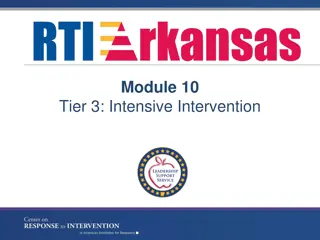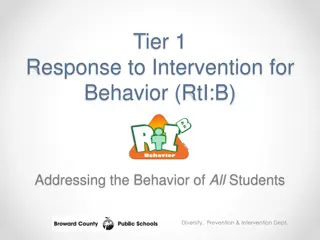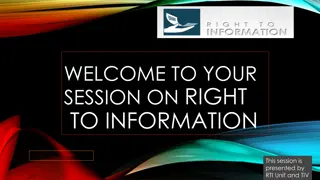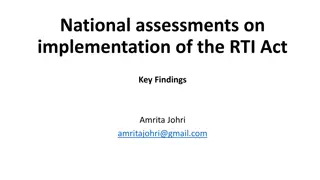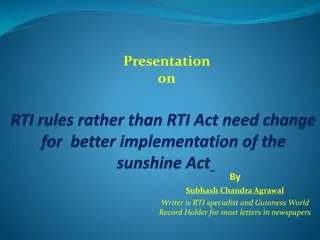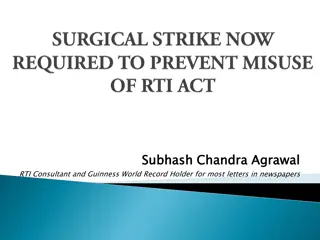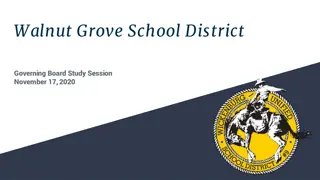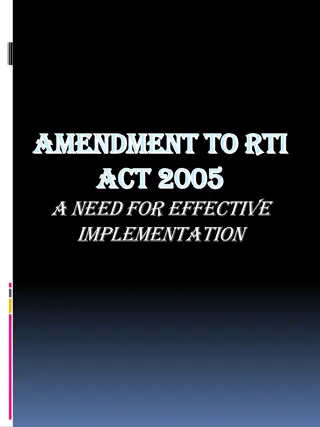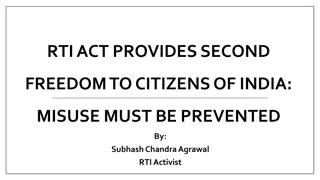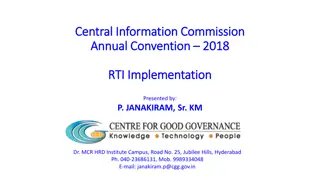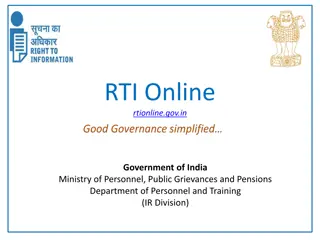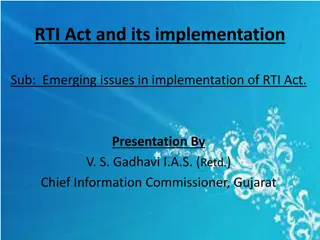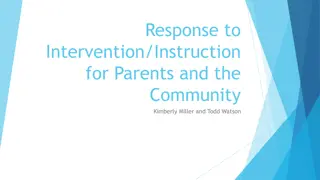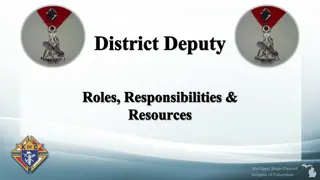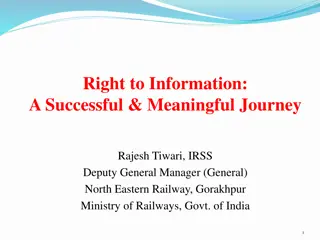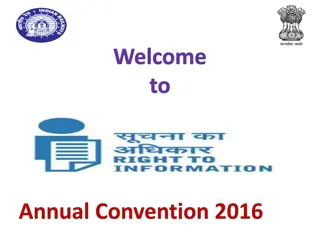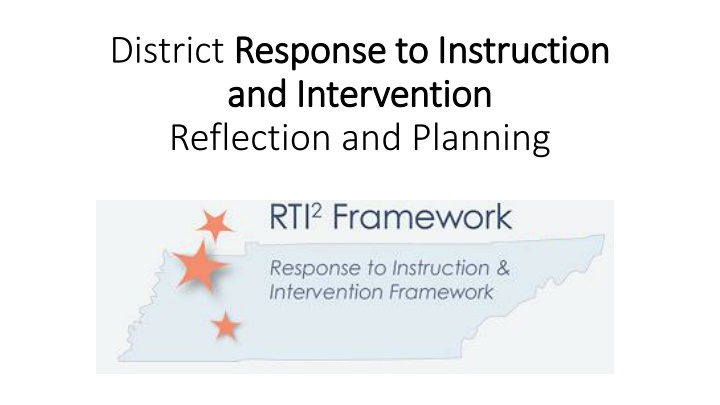
District Response to Instruction and Intervention Framework Reflection
Explore how a district's response to instruction and intervention is vital to student success through the RTI2 framework. Reflect on guiding questions, materials, objectives, and principles. Develop action plans tailored to meet state requirements.
Download Presentation

Please find below an Image/Link to download the presentation.
The content on the website is provided AS IS for your information and personal use only. It may not be sold, licensed, or shared on other websites without obtaining consent from the author. If you encounter any issues during the download, it is possible that the publisher has removed the file from their server.
You are allowed to download the files provided on this website for personal or commercial use, subject to the condition that they are used lawfully. All files are the property of their respective owners.
The content on the website is provided AS IS for your information and personal use only. It may not be sold, licensed, or shared on other websites without obtaining consent from the author.
E N D
Presentation Transcript
District Response to Instruction Response to Instruction and Intervention and Intervention Reflection and Planning
Our goal Our goal By 2017, the RTI2Framework will reduce the number of students scoring below basic on the NAEP. 2
Guiding Question Four:How do I create a space for skills instruction to occur regularly for all students at different grade levels and with different needs? Guiding Question One: How do you use data? What are your sources of data? What data do you use when? Guiding Question Three:How are interventions different than what happens during regular instruction? Guiding Question Two: How do you ensure that RTI2 is running with fidelity? 3
Material Walk Through Material Walk Through Next Steps Action Planning Toolkit Agenda (p. 3-4) Four Guided Question section tabs Discussion protocol Notes page Discussion Tool, SWOT, Guided Question Planning Resources (p. 15) Next Steps Action Planning documents tab 4
Our Our G Guiding Principles uiding Principles 1. Leadership at the state, district, and building level is essential for ensuring the success of ALL students throughout the RTI2 Framework 2. A culture of collaboration that is focused on student achievement, for both struggling and advancing students, should include educators, families and communities 3. RTI2 is a process focused on prevention and early intervention that uses assessment data for instruction, intervention and transitions between tiers 5
Objectives Develop/revise an RTI2 action plan with clear next steps that is tailored to district capacity and meets state requirements. Norms 1. Respect for diverse needs of district teams in whole group discussions. 2. Engage fully and avoid personal technology use. 3. Use planned agenda items fully and respect the air time of whole group to ensure agenda timeline is followed. 3. Transparent collaboration during district work time and whole group discussions. 4. Utilize work time effectively to clarify district needs and plan steps to move forward. 5. Parking Lot for unanswered questions and return answers sent through CORE office in one week. 6
The why of RTI The why of RTI2 2 Rucker-Stewart Middle School student Sumner County 7
Guiding Guiding Question Two: Question Two: How do you ensure that RTI2 is running Mark Gullion, Cedar Grove Elementary School, Rutherford County with fidelity? 8
Discussion Discussion Scenario Two Scenario Two 1. We need five volunteers. 2. Then, turn to the discussion scenario on page 28 of your Action Planning Toolkit. 3. Role Play 4. Discuss the questions provided. 5. Think about suggestions for this team on how to improve this planning meeting. 9
Data Team Levels Data Team Levels District level teams School based teams Responsibilities: make data-based decisions evaluate effectiveness of instruction and intervention based on school level data review and discuss all student data and student attendance in interventions align interventions to specific area(s) of deficit for each student ensure that interventions are implemented with integrity Responsibilities: ensure the fidelity of the RTI2 framework work to organize professional development set and monitor timelines for implementation guide the implementation of RTI2 10
How do we determine fidelity? How do we determine fidelity? Fidelity of Intervention Delivery Data collected:comparative groups of student progress monitoring data, walk through observation checks, intervention lesson plans, and overarching student transition data Fidelity of Student Placement Data collected: individual student progress monitoring data, analysis of rate of improvement, attendance in intervention, student behavior, student social and emotional needs Note: walk through observation vs TEAM observation Use: determine if the intervention is being delivered effectively. Use: determine if student s rate of improvement is showing adequate progress 11
Why Why do we determine fidelity? do we determine fidelity? Tier I Instruction Tier II/III Intervention Walk Through Observation TEAM Observations Mastery Assessments Progress Monitoring Student Growth towards skill mastery Student Achievement of grade level curriculum Ensuring Intervention Curriculum Effectiveness Ensuring Core Curriculum Effectiveness 12
What does fidelity look like for school data What does fidelity look like for school data teams? teams? Tier II think targeted fidelity Student data as targeted group Student data as individual Lesson Plans Walk through observations Tier III think intensive fidelity Student data as small group Student data as individual Consistent walk through observation data 13
District Discussion Time District Discussion Time 1. Discussion Protocol (p. 31) analyze the existing data tools what are you using the data results for how the data drives decisions for different tiers of instruction 2. SWOT Protocol (p. 35) what are the strengths of using data where are your gaps how can you use your strengths to overcome your gaps what are threats to success 15 minutes End 14
SWOT Sharing SWOT Sharing 1. Count off at table and move to numbered group. 2. Share with mixed group. 3. Return to district group to share experiences from other districts. 4. Prepare post it for shared. 5. Move to the Post It note that matches your number and share with others. Strengths Weaknesses Opportunities Threats 15
Action Planning Action Planning (p. 36 and p. 144) 1. Resources Walk (p. 37) 20 minutes 2. Planning 3. A Focus on Key Messages and General Rules of Practice End 16
Contact Information Contact Information Suzanne Keefe, Director of Special Projects Suzanne.Keefe@tn.gov Lisa Coons, Deputy Director of Instructional Leadership Support Lisa.Coons@tn.gov Rti.questions@tn.gov 17

